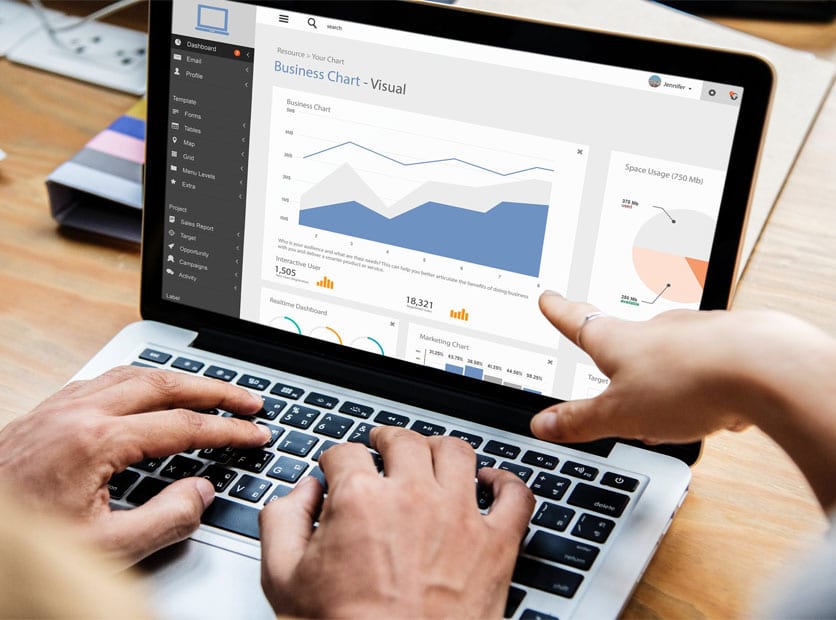Business Intelligence or (BI) is the process of using technology to collate, compile, and analyze data, translate it into useful information, and make strategic business decisions.
The evolution of business intelligence can be traced back to Richard Millar Devens’s time, where he explained how a banker bested his competitors by gathering information about market trends, which led to his success, in his book, “Cyclopaedia of Commercial and Business Anecdotes.” However, it was Hans Luhn who eventually coined the term business intelligence.
BI and data analytics technology are constantly evolving and the market shows no signs of slowing down. Naveen Miglani, CEO and CoFounder, SplashBI looks at how these changes have affected businesses in the last few years and what’s to come.
In recent years, the world of Business Intelligence (BI) has been turned upside down. Data became big, organisations adopted cloud computing, and spreadsheets took a backseat to actionable data visualisations and interactive dashboards.
In 1958, a computer scientist, Hans Peter Luhn, published an article titled “A Business Intelligence System” in the IBM Journal of Research and Development that would later become the foundation for how BI is understood today. Luhn’s article suggested using technology to simplify the process of gathering data rather than sifting through mountains of information by hand. Today, we understand BI as such; using technology to compile and analyse data, translate it into useful information, and then making strategic decisions based on the results.
The recurring trend in next generation BI tools is that of simplicity. Complex data analysis has become a breeze with the introduction of self service analytics platforms. Advances in BI technology alleviate the stress and labour hours of gathering, sorting, and using data to make informed business decisions. But how have these changes affected businesses in the last few years – and what’s to come.
Self-service analytics
Self service analytics has consistently topped the list of BI trend predictions each year, showing the increasing accessibility of BI tools and the positive impact of putting data back in the hands of individual teams, departments and leaders within organisations. The rising adoption of selfservice analytics enables users to gain deeper insights to drive data focused initiatives across the entire organisation—without having to rely on IT.
The rise of self-service analytics has also brought more attention to the growing necessity for modern organisations to adopt a data-driven culture. Businesses all over the world are using interactive data visualization and dashboards to tell their data story, and they’re doing it without using up a massive amount of IT resources. As advances are made in BI technology, the process of implementing a BI tool has become much less of a daunting task. Implementation and adoption time have been almost cut in half, data integration tools stepped into the ring, and talk of data governance/security solutions became common watercooler conversation.
Integrating technology
2017 was a major year for the BI industry. Significant advances were made in the way new technology integrated with existing BI processes, along with the development of tools that allowed data from separate applications or data stores to unite and display the big picture. The cloud was widely adopted due to advanced security and accessibility. Machine learning increased revenue for businesses by tracking buyer behaviour and analysing databases faster than ever before. AI became more prominent, and trials began to determine if AI could eventually replace human data scientists altogether.
By 2018, data analytics became a routine part of daily duties for most organisations. The value of using a BI tool had become a given, but the question then moved to choosing the right tool to fit an organisation’s unique and specific needs. Understanding the advantages of business intelligence tools can help organizations make informed decisions about which BI solutions best meet their specific requirements.”
Leaders began to take a look at common pain points in the business and started to learn more about how they could get the most value from a BI tool by asking questions such as, what do we want to achieve from analysing our data? How can BI help us reach our business goals? How can we use data to improve employee retention? Or measure turnover? Can we see which product drove the highest volume of sales in Q1? Could these insights really help us locate and obtain net new clients?
To address these pain points, it’s crucial to understand why businesses need business intelligence reporting tools for effective data analysis.
BI has never been a one-size-fits-all answer. That’s the reason it initially gained popularity, as different departments have different data. Sales won’t need the same Monthly Advertising Report that Marketing will use to create next month’s budget. BI was the hottest new tool that could help any person, in any position, in any company use their data to make fact based decisions. These custom data reports guided businesses in the direction of the most important metrics; whether it’s HR, Marketing, Sales or Finance.
BI Trends now and in the future
BI and data analytics technology are constantly evolving and the market shows no signs of slowing down. Business Intelligence makes data of any kind easy to digest with stunning visualisations, detailed historical analysis, and customisable reports. In fact, by the end of 2019, the Global BI and Analytics Market is expected to grow to $20 billion.
In 2020, experts say we will continue to see increased adoption of BI tools among businesses of all sizes that hope to speed up their organisation’s journey to success. Retail, construction healthcare, banking and transportation are expected to make up the majority of new adopters. Additionally, the way data is created and handled will experience a significant change in the coming years.
But what does the far future look like for BI? What was once just a tool for pinpointing patterns in an organisation’s data, has evolved into a robust, realtime solution focused on using hard and fast data to not only see a snapshot in time, but to view the entire picture. BI enables companies to make the best possible decisions using their own data, and the organisations that capitalise on this technology that will reach their business goals.








